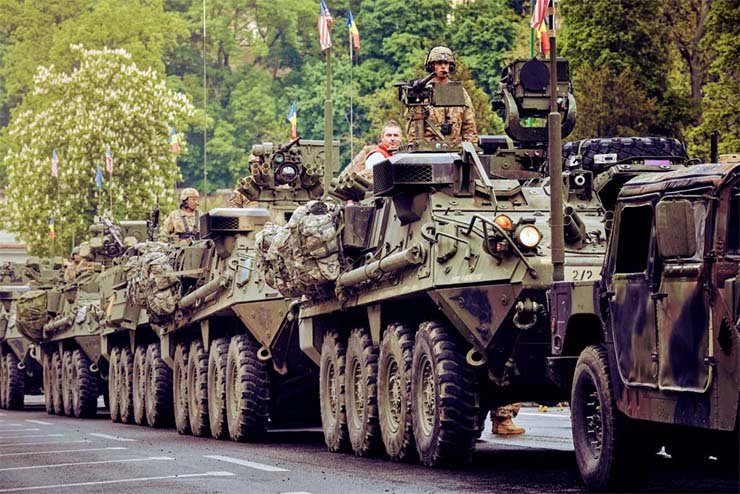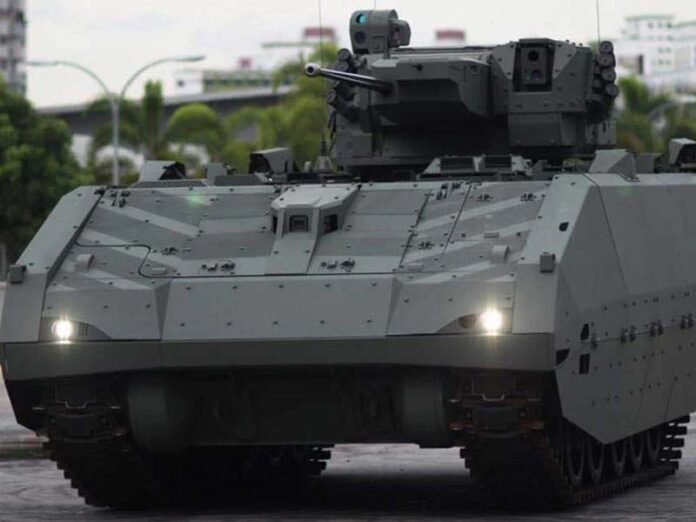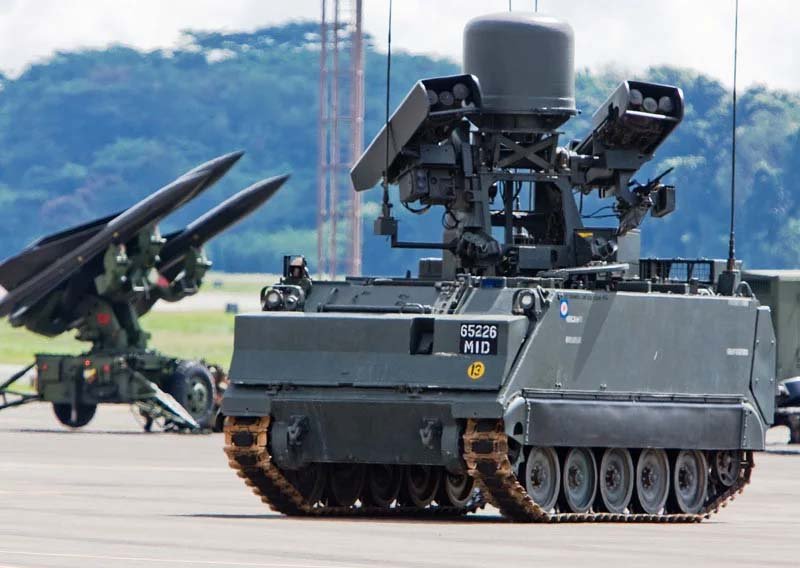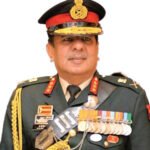General: Armoured Fighting Vehicles (AFVs) are the harbinger of modern technology and thus always front runners of state-of-the-art technology infusion. From unmanned systems and advanced armour materials to AI and directed energy weapons, these innovations promise to enhance MBT survivability, lethality, and adaptability on the modern battlefield. As nations invest in these capabilities, the role of MBTs will continue to evolve, ensuring their relevance in a complex and dynamic security environment.
Future Operational Needs and Desired Impact
Survivability
- Survive (no absolute survivability) a 360-degree full-dimensional threat from 200m to beyond line of sight.
- Non-traditional
- Affordable survivability based on a multi-layered kit.
- Survivability & Counter-Measure System based on vehicle silhouette profile, stealth, crew configuration, active protection, and lightweight configurable armour arrays.
- Impact – AFV must survive to continue in battle with a 90% probability against contemporary threats and an 80% probability against future threats with a 15% allowance for future threat systems.
Lethality
- To defeat contemporary and future threats at longer ranges including smart ammunition with first-round hit capability and single-shot kill probability (SSKP) in minimum time.
- Impact – Integrating lethality technology to provide a substantial increase in system accuracy, SSKP at minimum 3 km direct fire guns and beyond the line of sight for missiles and smart ammunition. Hunter- Killer to killer- killer multi-target engagement.
Agility
- Fuel efficient, variable HP modular engines with the power to weight ± 25:1 with automatic transmission, active/adaptive suspension and high power-to-volume ratio.
- Impact – Fuel economy increased by 20%, increased operating range by 30-40%, enhanced cross country speed by 20%, lower nominal ground pressure, enhanced mean time between failure by 40% with minimal maintenance, drive comfort/ergonomics enhanced by 30% and Noise Reduction 20%.
Others
- Situational Awareness & Digitisation suites.
- Virtual reality under armour systems – 360-degree button-up visibility and intelligent detection systems.
- Signature and crew configuration for survivability.
- Strategic, operational and tactical mobility impacted by weight and dimension considerations
- Common chassis system design for variant platforms; and logistics cum development cost advantage.
- Network connectivity and cyber defence against future threats.
AFVs Technology Vectors
(a) Enhanced Survivability in a Hybrid Environment: Multi-layered systems comprising lightweight passive armour, intelligent dynamic armour and active protection system (both soft kill and hard kill) to detect, deflect, jam/destroy incoming projectiles and if hit survive. With 4GW taking centre stage in current and future battlefield scenarios, protection against UAVs, top attacks, and blast effects of IEDs/mines by absorbing/deflecting blast energy, is becoming unavoidable. Advancements in metallurgy based on non-metallic armour and nanotechnology reduce weight with higher protection levels. Signature management both with passive, and active camouflage systems and stealth technology is a reality.
(b) Enhanced Lethality with improved gun performance, advanced optronics, advanced first-round hit capability, and improved ammunition including thermobaric, smart ammunition, multipurpose ammunition, and third-generation missiles. Thermobaric (TB) and Penetration Cum Blast (PCB) ammunitions in place of HE ammunition will aid in firing for effect with enhanced lethality. Similarly, anti-helicopter ammunition fired from the gun barrel can pulverise the target end with fragments. Directed Energy Weapons such as lasers provide precise and rapid engagement capabilities against aerial and ground targets, offering a cost-effective alternative to conventional munitions. Railgun technology enables MBTs to launch projectiles at hypersonic speeds over extended distances, enhancing lethality against armoured targets.
(c) Mobility and Agility with higher power-to-weight ratios, higher power density engines with fuel sufficiency and low heat rejection. Improved transmission to ensure improved engine efficiency, like hybrid electric propulsion. Semi-active and active suspension permits a stable platform and increases cross-country speed.
(d) Digitisation and Vetronics to generate higher situational awareness, network-enabled operations and higher interoperability. In reality, this network-centric approach in an AFV involves systems and sensors as given below:
- Battlefield management system (BMS)
- Software-defined radio (SDR)
- Automated target tracker (ATT)
- Commanders panoramic sight (CPS)
- Gunners main sight (GMS)
- Laser target designator (LTD)
- Laser range finder (LRF)
- Laser warning and countermeasure system (LWCS)
- Drivers sight with thermal imager (TI)
- Combat identification of friend or foe (CIFF)
Future MBTs are expected to incorporate autonomous capabilities for reconnaissance, surveillance, and even combat operations. This reduces crew risk and expands operational reach. Optionally manned or fully unmanned MBTs will allow commanders greater flexibility in deploying armoured units in high-risk environments
(e) Versatility and Deployability by ensuring the desired tactical, operational and strategic lift capability and adaptability to designated operational roles.
(f) Mission Reliability and Logistic Ease with reduced logistic/maintenance requirements, modular form fit sub-systems, in-built diagnostics & redundancies (fault-management) and high mean time between failures.
(g) Intelligent Power Management to cater for a potential array of active electric armour, massively enhanced situational awareness sensors, high-speed electro-hybrid drive train and mounted laser emitters. Developments in light, high-capacity batteries and intelligent power management systems with adequate backup will play a major role in future AFV design.
(h) Autonomous Operation: Future MBTs are expected to incorporate autonomous capabilities for reconnaissance, surveillance, and even combat operations. This reduces crew risk and expands operational reach. Optionally manned or fully unmanned MBTs will allow commanders greater flexibility in deploying armoured units in high-risk environments.
(J) Managing Projects through Integrated Design Environment (IDE) and Product Life Cycle Management (PLM). The world over, increasingly all aspects of vehicle (including A vehicle) design, development, production and sustenance are being managed through customised IDE software. AI systems could play a positive role in this sphere. These will cut down not only the cost of product designing manifold but also tremendously cut down the timelines for the design and development of Greenfield projects/platforms. Any new product/upgrade contemplated for the defence forces and planned to be indigenised must follow this route of development as a pre-requisite.
Emerging AFV Technology Perspective
Micro Electronics Technology. These are micron-scale devices integrating mechanical or structural elements, such as accelerometers and micro mirrors with electronic devices like microprocessors and radio frequency transmission. This technology will bring in miniaturization and reduce the size and weight of present-day weapon platforms, communication and processing systems. Microelectronics is likely to be the focal point of all future technology related to warfare.
Information Technology (IT). Communication technology when integrated with computers forms the backbone of IT. In turn, IT will be the bedrock and chief integrator for all emerging technologies. It will streamline and compress the vertical and horizontal continuum of war.
EMP/ Directed Energy Weapons Technology. Non-nuclear EMP weapons, laser-based Directed Energy Weapons (DEW) and Dazzle Guns are under various stages of development and need to be factored into any future development projects not only as a possible weapon but also as its countermeasure. The rapid rise of laser technology, particle beam technology, microwave technology and plasma technology has provided the foundation for the creation of directed energy weapons.
AI algorithms can optimise battlefield decision-making, sensor fusion, and predictive maintenance, improving overall operational efficiency. AI-driven predictive analytics can anticipate enemy tactics and enhance situational awareness, empowering MBT crews with real-time intelligence
Stealth Technology. Evasion of detection is the chief characteristic of stealth weaponry. It encompasses the development of technology permitting optimal shaping of radar-absorbing materials designed to minimise thermal and acoustic signatures. The survival potential of AFVs can be enhanced exponentially by way of signature management.
Material Technology. Survivability on the battlefield is closely related to protection. Materials such as advanced alloys, ceramics, composite and hybrid materials are increasingly being used to protect AFVs. Combining these futuristic materials with technology such as explosive reactive armour and active armour significantly enhances its performance. Today, near immunity from chemical energy projectile has become a reality and the chance of survival against Kinetic Energy Projectile has been considerably increased. Utilisation of nanotechnology in armour materials offers enhanced strength-to-weight ratios and improved resistance against kinetic and chemical energy threats.
Artificial Intelligence (AI). AI algorithms can optimise battlefield decision-making, sensor fusion, and predictive maintenance, improving overall operational efficiency. AI-driven predictive analytics can anticipate enemy tactics and enhance situational awareness, empowering MBT crews with real-time intelligence. AI improves the self-control, self-regulation, and self-actuation of combat systems due to its inherent computing and decision-making capabilities. Effective use of AI will improve the man-machine interface, battlefield management, and employment of autonomous weapons and other systems. AI has the potential to reduce annual maintenance costs of combat vehicles through effective scheduling of preventive maintenance, thus enhancing the overall reliability, availability, maintainability and dependability factor. AI is particularly useful for quickly and efficiently processing large volumes of data to obtain valuable information. AI is also expected to empower autonomous and high-speed weapons to carry out collaborative attacks. Additionally, AI in target recognition systems improves the ability of these systems to identify the position of their targets. AI-aided simulation & training is another multidisciplinary field that pairs system engineering, software engineering, and computer science to construct computerised models that acquaint soldiers with the various combat systems deployed during military operations.
3D Printing Technology. Complementing the IDE/PLM-based design are new production technologies which go under various names viz. Direct Digital Manufacturing, Additive Layer Manufacturing, Rapid Prototyping, Rapid manufacturing etc. and more colloquially called 3D Printing. These technologies have revolutionised the world of prototyping especially as these do away with the requirement of tooling, SMT/STEs and moulds. Cost and Time savings potential are tremendous and thus ideal for initial prototyping as well as upgrades of existing equipment. In situ production of spares in the field (directly from CAD drawings), is another area that has promise wherein inventory carrying costs and associated logistics could be drastically reduced.

Integration Challenge
The successful integration of these technologies into future MBTs presents several challenges, including power management for energy-intensive systems, cybersecurity against electronic warfare threats, and interoperability within joint operations. Addressing these challenges will be crucial in realising the full potential of advanced MBT capabilities.
Tiered Technology Induction Strategy
Future technology infusion must follow a multi-tiered approach with a long-term vision. It must entail financial support to Defence R&D and an integrated defence ecosystem. Further, “Transition Technology” poses challenges for the successful time-critical transition of tabletop technology to a military entity which needs focus. All multi-tiered levels are not sequential but simultaneous with the user, technologist, defence industry and academia interfaced in a hand-holding model as under:-.
- Level 1. Immediate time-critical technology gap be bridged by mature contemporary technology in a spiral approach, with emphasis on indigenisation, transfer of technology where indigenous capability void exists and integration in the earliest time frame. These system upgrades include items for which technologies rapidly change such as sensors, software, and optoelectronics, which are required to be adaptable and reconfigurable across multiple platforms, expansible and linked to close multiple capability gaps. However, the important issues of power, weight and space management must be addressed before modular fit and easy adaptability to legacy equipment. These must essentially be addressed by internal R&D of the entire defence manufacturing sector including DPSU, PSU and private defence industry.
Integrating technologies into MBTs presents several challenges, including power management for energy-intensive systems, cybersecurity against electronic warfare threats, and interoperability within joint operations. Addressing these challenges will be crucial in realising the full potential of advanced MBT capabilities
- Level 2. These platform upgrades include desired capabilities and emerging technologies for frontline AFVs and, thus, mandate-focused R&D. These technologies change more slowly such as engine, gun tube, fire control systems, communications etc; and as such need to be planned for induction during overhaul intervention of AFVs. MoD must identify five or six such technologies, where India must have complete control and support / encourage R&D in this quest. A rejuvenated DRDO, DPSUs/ private defence industry-driven R&D and technologists from academia can play an important role in this sphere.
- Level 3. Systems which are expensive and where technology changes slowly such as active protection systems, new generation engines and transmission or new major capabilities such as missile firing etc, require to be changed in life extension programmes to bridge technology gaps. An integrated R&D approach by all stakeholders including academia is required, as part of the integrated defence ecosystem and a collaborative defence industrial base.
- Level 4. These include Loop Ahead Technology and disruptive technology for Next Generation AFVs with a focus on science and technology projects. MoD must identify a few such disruptive technology challenges. We ought to constitute America’s DARPA (Defence Advanced Projects Agency) like funding body manned by technical experts to give an open call to qualified citizens to come up with ideas and contribute to this transformational technology development.
Conclusion
The exponential advancements in military technology in the 21st century have rapidly transformed warfare. The infusion of military technology has radically impacted a nation’s warfighting capabilities aimed at gaining combat overmatch. The pursuit of niche military technology has thus become intrinsic to national security. However, technology access, denial/protectionism, diffusion and proliferation pose challenges to today’s interdependent world. The pragmatic effort must be to bridge core technology gaps both through indigenous and ToT/JV routes till self-dependency and a vibrant defence technology base are established.
-The author is a PVSM, AVSM, VSM has had an illustrious career spanning nearly four decades. A distinguished Armoured Corps officer, he has served in various prestigious staff and command appointments including Commander Independent Armoured Brigade, ADG PP, GOC Armoured Division and GOC Strike 1. The officer retired as DG Mechanised Forces in December 2017 during which he was the architect to initiate process for reintroduction of Light Tank and Chairman on the study on C5ISR for Indian Army. Subsequently he was Consultant MoD/OFB from 2018 to 2020. The Officer is a reputed defence analyst, a motivational speaker and prolific writer on matters of military, defence technology and national security.The views expressed are personal and do not necessarily carry the views of Raksha Anirveda
The author, a PVSM, AVSM, VSM has had an illustrious career spanning nearly four decades. A distinguished Armoured Corps officer, he has served in various prestigious staff and command appointments including Commander Independent Armoured Brigade, ADG PP, GOC Armoured Division and GOC Strike 1. The officer retired as DG Mechanised Forces in December 2017 during which he was the architect to initiate process for reintroduction of Light Tank and Chairman on the study on C5ISR for Indian Army. Subsequently he was Consultant MoD/OFB from 2018 to 2020. He is also a reputed defence analyst, a motivational speaker and prolific writer on matters of military, defence technology and national security. The views expressed are personal and do not necessarily carry the views of Raksha Anirveda







